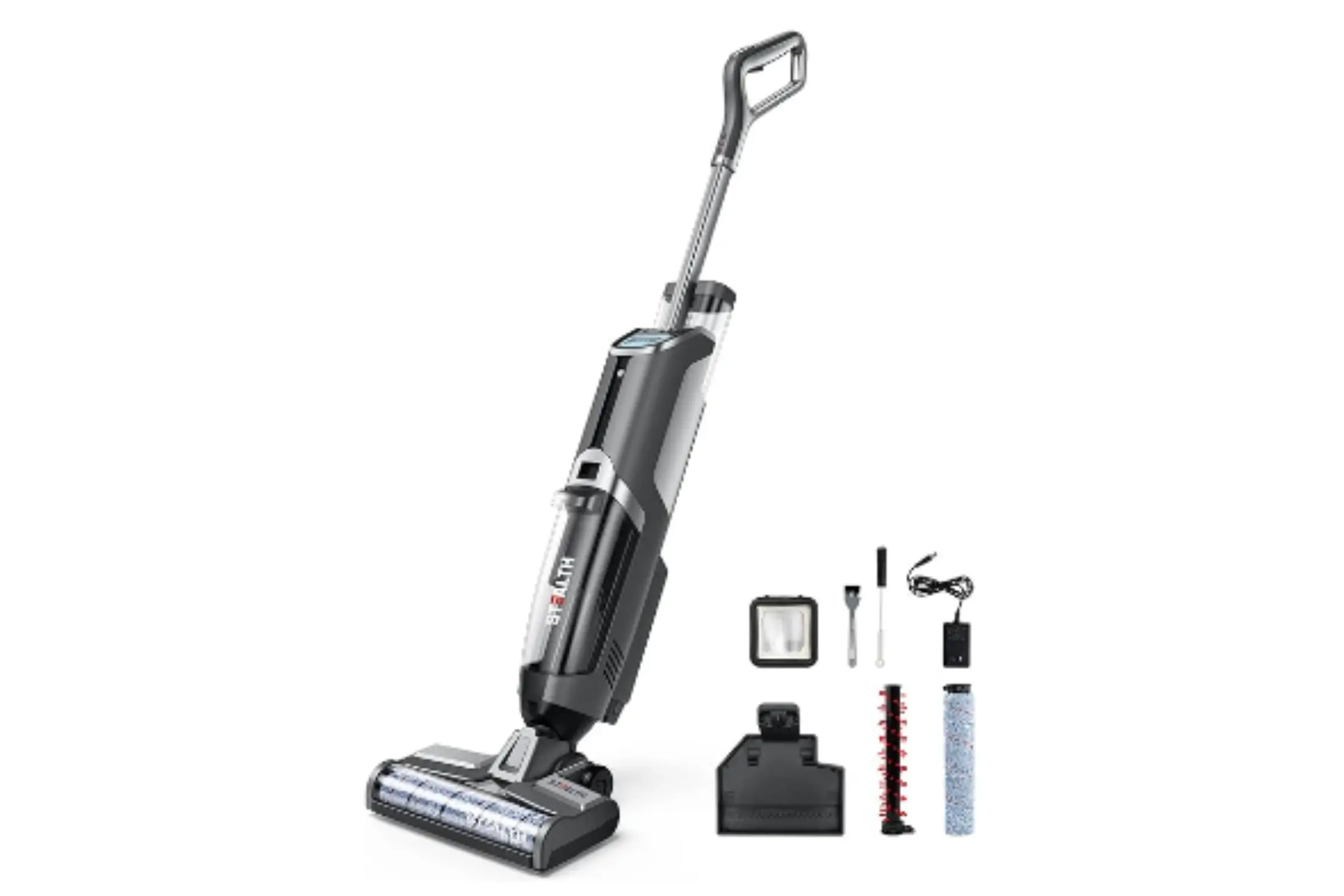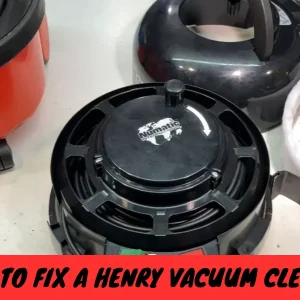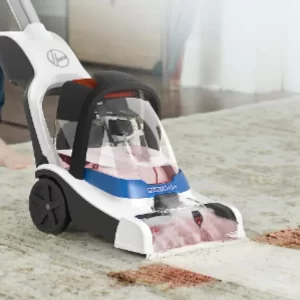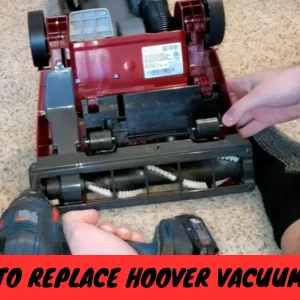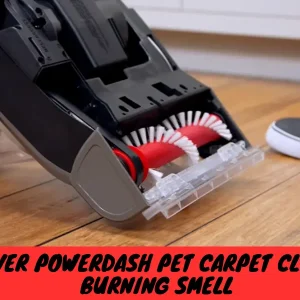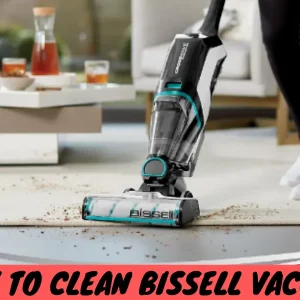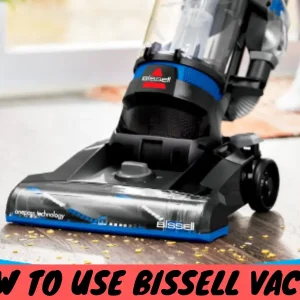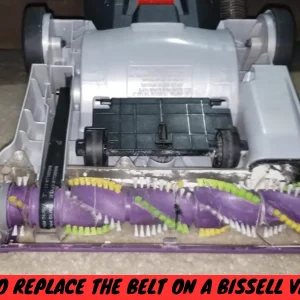“Discover How Wet and Dry Vacuum Cleaner Work! Dive into the inner workings of these versatile cleaning machines in our latest article. Get ready to be amazed!”
How Wet and Dry Vacuum Cleaner Work
The capabilities of a standard vacuum cleaner and a liquid suction pump are combined in a wet and dry vacuum cleaner, a versatile cleaning tool. It creates a strong suction to draw in air, trapping both liquid and solid waste in a specific container made of a rigid material such as stainless steel or hard plastic. This vacuum cleaner can handle multiple problems with various cleaning-specific attachments, from dry dust and dirt to wet spills and liquids. To ensure optimal performance and avoid issues such as odours or mould growth, users should exercise caution when transitioning between wet and dry modes and perform regular maintenance.
Wet and dry vacuum cleaners, sometimes referred to as ‘shop vacs,’ are versatile cleaning tools. They find applications in homes, workshops, construction sites, and industrial facilities due to their ability to handle both liquid spills and solid waste. In this guide, we will explore how wet and dry vacuum cleaners work to efficiently clean various types of messes.
These vacuums differ from traditional ones and are primarily designed for dry cleaning. Their robust design and advanced materials enable them to absorb and contain liquids effectively while maintaining high performance.
Understanding the complex mechanisms of your wet and dry vacuum cleaners and how they work is essential to maximizing their benefits and ensuring their longevity. Learning about its inner workings and guiding principles will better prepare you to use it effectively and perform necessary maintenance.
The Basics of Vacuum Cleaning
Vacuum cleaning is a fundamental and efficient method for keeping your home or workplace clean, and it’s essential to understand how wet and dry vacuum cleaners work. It concerns employing a vacuum cleaner to remove dust, dirt, debris, and allergens from various surfaces. Here are the basics of vacuum cleaning:
Explanation of Suction Power
The primary function of any vacuum cleaner is its suction power, which indicates its cleaning efficiency. Both wet and dry vacuum cleaners have powerful motors and fans to produce high suction levels. Thanks to this suction power, they can effortlessly remove liquids, dust, dirt, and debris from various surfaces.
To make an informed choice and optimize the cleaning power of your vacuum cleaner, it is essential to understand how the suction power is generated and controlled in the device.
Different Types of Vacuum Cleaners
Before delving into the specifics of how wet and dry vacuum cleaners work, it’s beneficial to compare them to other types of vacuum cleaners, such as upright, canister, and robotic models. By comprehending the distinctions in design and functionality, you’ll develop a better understanding of the distinct advantages that wet and dry vacuum cleaners provide.
Advantages of Wet and Dry Vacuum Cleaners
Wet and dry vacuum cleaners offer several different advantages:
- Versatility: Wet and dry vacuum cleaners excel in damp and dry cleaning, providing versatility for various applications.
- Efficiency: Thanks to their strong suction power and unique design, they effortlessly handle debris, liquids, and even tiny particles.
- Durability: These vacuums are typically employed in challenging environments due to their durability and resistance to rough use.
- Cleaner Air: Many models have advanced filtration systems, such as HEPA filters, which improve indoor air quality by capturing tiny particles and allergens.
- Time Savings: Their efficiency and adaptability reduce the need for multiple cleaning tools, saving valuable time.
Comprehending these advantages will help you understand why wet and dry vacuum cleaners are a valuable addition to your cleaning equipment.
Components of a Wet and Dry Vacuum Cleaner

Main Body and Housing
A wet and dry vacuum cleaner has its core components and provides structural stability. It is often made from durable materials such as stainless steel or heavy-duty polymers, which ensure longevity and resist wear and tear.
Motor and Fan
These vacuum cleaners store debris collected during cleaning in a collection tank. To meet your specific cleaning needs, choosing a vacuum cleaner with an appropriately sized collection tank is essential. Tanks are available in various sizes, from a few gallons for household use to larger volumes for commercial applications.
Collection Tank
A wet and dry vacuum cleaner stores items collected during cleaning in a collection tank. Choosing a vacuum cleaner with the right size collection tank is crucial to meet your specific cleaning needs. Tanks come in various sizes, from a few gallons for domestic use to larger volumes for commercial applications.
Filters and Filtration System
The filtration system of any wet and dry vacuum cleaner is essential to the machine. This process ensures that the exhausted air is clean and free of allergens, preventing dust and debris from re-entering the environment. High-end models often feature HEPA filters because of their exceptional ability to capture tiny particles.
Hose and Nozzles
The nozzle and hose attachment plays a vital role in the adaptability of a vacuum cleaner. Hoses come in different materials and lengths, offering versatility and reach. For example, crevice tools are designed for tight spaces, brush attachments for carpets, and wide nozzles for large debris. Specialized nozzles fulfill specific cleaning tasks.
Working Principle of a Wet and Dry Vacuum Cleaner
Suction Process
- Creating a Pressure Difference: The vacuum cleaner’s motor and fan create a pressure difference by drawing in air. The low-pressure environment causes surrounding air to rush in, picking up dirt, dust, and debris.
- Airflow and Suction Path: The generated airflow directs the particles and liquid through the hose and into the collection tank. Strong suction power enables effective cleaning across a variety of surfaces.
Separation of Wet and Dry Materials
- Water and Liquid Handling: Vacuum cleaners, wet or dry, are engineered to handle liquids without damaging their internal components. They often incorporate systems to separate air from liquids, directing the juices to a specific section of the collection tank.
- Solid and Dust Collection: Solid waste such as dirt, dust, and large particles are collected in a separate tank area to prevent contamination of the liquid compartment.
Filtration Process
- HEPA Filters and Their Importance: Many wet and dry vacuum cleaners have a high-efficiency particulate air (HEPA) filter as a separate component. These filters ensure the exhaled air is clean and safe to breathe by capturing microscopic debris, allergens, and fine dust particles.
- Cyclonic Separation: Some models use a technique known as cyclonic separation, which uses centrifugal force to separate particles from the airflow before they reach the filter. This method reduces filter clogging and increases filtration efficiency.
Understanding the Motor and Fan
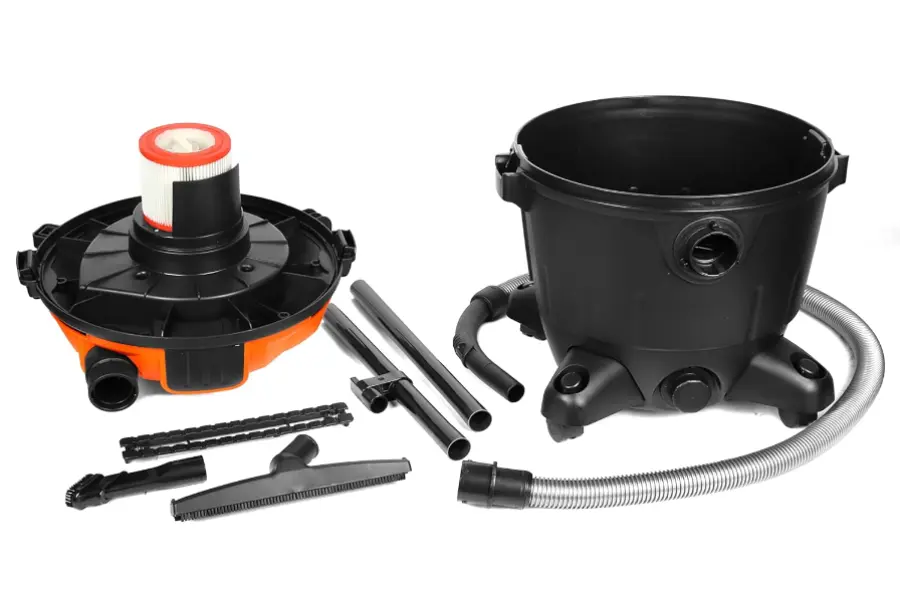
Understanding how wet and dry vacuum cleaners work, the motor and fan in a damp and dry vacuum cleaner are essential, as they are the core components responsible for creating suction and facilitating the cleaning process. Here’s an explanation of these crucial parts:
Motor Types Used in Wet and Dry Vacuum Cleaners
Wet and dry vacuum cleaners are equipped with various types of motors, each with its advantages:
- Universal Motors: These vacuum cleaners are typical household models known for their strong suction power. They are versatile and capable of handling both wet and dry materials.
- Induction Motors: In industrial-grade vacuum cleaners, induction motors are often employed due to their exceptional durability, which makes them suitable for heavy-duty applications.
The Role of the Fan in Suction
An important component that increases the performance of the motor is the fan. It draws in air and creates the airflow necessary for suction. The fan’s size and design significantly affect the vacuum’s performance, making it essential to choose a model with a well-designed fan.
Importance of Motor and Fan Efficiency
Efficiency affects both energy consumption and cleaning power. Vacuum cleaners equipped with efficient motors and fans work efficiently with less energy consumption. Over time, this can lead to cost savings and a reduced environmental footprint.
Collection Tank and Its Features
Tank Capacity
When you choose a wet and dry vacuum cleaner, it’s essential to consider the size of the collection tank and how wet and dry vacuum cleaners work. A larger tank can hold more waste and liquid, reducing the need for frequent emptying during intensive cleaning jobs. However, balancing tank size and portability is essential, as larger tanks can make the vacuum heavier and less convenient to manoeuvre.
Material and Design
The material and design of the collection tank affect its durability and ease of maintenance. Plastic tanks are portable and corrosion-resistant, while stainless steel tanks are understood for their durability. An efficient tank should be easy to empty, maintain, and clean.
Maintenance and Cleaning
To maintain hygiene and prevent odors, you should ensure proper maintenance of your collection tank. After each use, empty the tank regularly and clean it to avoid the growth of mold or residue. Reasonable care will extend the life of your wet and dry vacuum cleaner.
Filters and Filtration System
Filters and the filtration system play a crucial role in the effectiveness of a wet and dry vacuum cleaner and understanding how wet and dry vacuum cleaners work. They help trap particles and prevent them from being released back into the air during cleaning. Here are some key aspects related to filters and filtration systems in wet and dry vacuum cleaners:
Types of Filters
- HEPA Filters: HEPA filters are renowned for effectively removing small particles, including allergens. For those concerned about indoor air quality, they are essential.
- Foam Filters: Foam filters are typically used as pre-filters to capture larger particles before passing through HEPA filters. These filters can be cleaned and reused.
Function of Filters
Filters play an essential role in maintaining clean air during vacuuming by trapping particles and preventing them from re-entering the environment. Understanding their purpose emphasizes the importance of filters in the operation of a vacuum cleaner.
Replacing and Cleaning Filters
Regularly checking and cleaning your vacuum filters is crucial to achieving optimal performance. While some filters can stand cleaned and reused, others may require replacement after a certain period. Proper filter maintenance is essential to ensure consistent production of clean air.
Hose and Nozzles
Types of Hoses
Most wet and dry vacuum cleaners include a range of hoses designed for specific cleaning tasks.
- Standard Hoses: This adaptable hose can handle various cleaning tasks.
- Flexible Hoses: Flexible hoses are helpful for deep cleaning as they quickly reach the nape and cranium.
- Extension Hoses: You can clean a large area with the extension hose while keeping the vacuum steady.
Nozzles for Different Surfaces
Nozzles and attachments make the vacuum cleaner more adaptable to different surfaces:
- Crevice Tools: This tiny nozzle is best for getting into nooks and crannies.
- Brush Attachments:Using a brush on carpets and upholstery can help lift and lift dirt and debris.
- Wide Nozzles: Wide nozzles are handy for cleaning garages and workshops as they can handle heavy debris.
Knowing the ideal hose and nozzle setup for a given cleaning operation can significantly increase the implementation of your wet and dry vacuum cleaner.
Maneuverability and Reach
Extending the reach and mobility of your vacuum cleaner is essential, and you can achieve this by making the most of hoses and nozzles. You can easily reach confined spaces and clean various surfaces by understanding how to connect and operate these accessories.
Benefits of Using a Wet and Dry Vacuum Cleaner
A wet and dry vacuum cleaner offers several benefits, making it a versatile and valuable cleaning tool for various situations. Here are some of the advantages of using a wet and dry vacuum cleaner and understanding how wet and dry vacuum cleaners work:
Versatility in Cleaning
Vacuum cleaners, whether wet or dry, offer a versatile cleaning option. They specialize in various cleaning tasks, providing a thorough cleaning service capable of handling wet spills, dry dirt, and even tiny dust particles.
Health and Allergen Benefits
These vacuum cleaners often have sophisticated filtration systems, including HEPA filters. This makes them an excellent choice for people with allergies or respiratory sensitivities, as they can effectively trap particles such as pollen, pet hair, and dust mites.
Time and Effort Savings
Wet and dry vacuum cleaners can complete cleaning tasks quickly and efficiently thanks to their strong suction and versatility. This can keep you invaluable time and step, especially when dealing with major accidents or extensive cleanup projects.
Common Applications for Wet and Dry Vacuum Cleaners
Wet and dry vacuum cleaners are versatile tools that find applications in various settings due to their ability to handle wet and dry cleaning tasks. Here are some typical applications for damp and dry vacuum cleaners, along with an explanation of how wet and dry vacuum cleaners work:
Household Cleaning
For a broad spectrum of cleaning tasks in the home, such as spills, pet messes, and routine maintenance, wet and dry vacuum cleaners are essential.
Commercial and Industrial Use
These vacuum cleaners are essential for cleaning various materials in commercial and industrial settings such as factories and construction sites.
Automotive and Garage Cleaning
The versatility of wet and dry vacuum cleaners makes them ideal for vehicle repair and garage cleaning, where oil spills, sawdust, and dirt are common occurrences.
Maintenance and Care Tips
Maintaining and caring for your wet and dry vacuum cleaner is important to confirm its longevity and optimal performance. Here are some maintenance and care tips to help you keep your vacuum in good working condition while understanding how wet and dry vacuum cleaner work:
Regular Cleaning Routine
To ensure your vacuum cleaner’s longevity and peak performance, it is essential to establish a cleaning and maintenance schedule. Regularly empty the collection tank and inspect the filters.
Emptying and Cleaning the Collection Tank
Proper emptying and cleaning of the collection tank is crucial to prevent odors and maintain vacuum hygiene. After emptying, rinse the tank carefully and allow it to air dry before reassembling.
Inspection of Filters and Replacements
Check the filter frequently for damage or blockage. Follow the manufacturer’s instructions for washing or replacing filters to maintain clean air quality and suction power.
Who can benefit from using a wet & dry vacuum cleaner?
The wet and dry vacuum is a great all-purpose cleaner for any homeowner. A damp and dry vacuum benefits people who do their own home improvement or DIY projects because it can quickly clean up paint, debris, or sawdust. Bathroom spills and other accidents can be cleaned up soon by families with small children.
Wet and dry vacuums are also helpful for homes that frequently flood or have burst water pipes because they soak up water quickly. To meet your needs and available space, wet and dry vacuum cleaners usually range in size from 6 to 12 litres, although they should always be kept in the garage.
Do wet and dry vacuums work on carpet?
Most wet and dry vacuums need more effectiveness in cleaning carpets thoroughly. Special carpet cleaners, specially designed for this purpose, will help remove debris and water while protecting the pile surface of the rug.
However, Bissell offers excellent spot-cleaning options for area rugs or carpets. The Bissell CrossWave vacuums and washes tiled, laminated and sealed wood floors, while the Bissell Little Green can clean small spills from carpets, upholstered furniture and car interiors.
Is it worth buying a wet and dry vacuum?
Choosing between a wet and dry vacuum ultimately depends on your specific needs. If you frequently encounter wet messes or large particles, a damp and dry vacuum cleaner can complement your cleaning performance.
However, a basic vacuum cleaner may be a better choice if you only want to deal with the occasional spill or prefer a lighter cleaning tool for routine cleaning.
How to use wet and dry vacuum cleaner
Conclusion: How wet and dry vacuum cleaner work.
“In this comprehensive tutorial, we discussed the inner workings of wet and dry vacuum cleaners, including how wet and dry vacuum cleaners work. Thanks to their powerful motors, fans, filtration systems, and versatile accessories, these tools are indispensable for various cleaning tasks.
By understanding how wet and dry vacuum cleaners work and the operation and maintenance of these machines, you can maximize their potential and ensure the cleanliness and health of your living and working environment.
Both wet and dry vacuum cleaners offer exceptional cleaning versatility. They are invaluable additions to any cleaning toolkit, as they can effectively tackle many cleaning tasks, including handling liquid spills, dusty surfaces, and even outdoor challenges.”
FAQs
Wet vacuuming involves cleaning up liquid spills, while dry vacuuming deals with solid debris like dust and dirt. Wet and dry vacuum cleaner are design to handle both, making them versatile cleaning tool.
Yes, wet and dry vacuum cleaners are well-equippd to handle large liquid spills. They have a separate compartment for liquid collection and can effectively clean up substantial spills.
Filter maintenance frequency depends on usage and the type of filter. Some filters are washable and reusable, while others may need replacement every few months. Regular inspection and cleaning are essential to ensure optimal performance.
Yes, wet and dry vacuum cleaners are beneficial for pet owners. They can efficiently remove pet hair, dander, and liquid messes, contributing to a cleaner and healthier environment for both pets and their owners.
Yes, wet and dry vacuum cleaners are versatile enough to be use for outdoor cleaning. They can handle tasks like cleaning patios, garages, and even vehicles, making them a versatile choice for outdoor maintenance.
Safety is paramount when using any electrical appliance. Ensure that the vacuum cleaner is in good working condition, avoid vacuuming hazardous materials, and follow manufacturer’s instructions regarding electrical safety and cord management.
Before storing your vacuum cleaner, make sure it’s clean, and the collection tank is empty. Remove and clean the filters, and store the vacuum in a dry, cool place. Periodically check the unit to ensure it’s in proper working order, especially after long periods of storage.
